Whether it’s a pill that allows you to access the (entirely fictional and troperiffic) untapped 90% of your brain’s potential, or a soporific hallucinogen designed to maintain the blissful equilibrium of an imagined utopia, fictional drugs have long allowed sci-fi writers to tap into freaky times and far out powers while exploring themes such as the power of perception, the limits of societal control, and the cycle of addiction. The following are five such stories I’ve been both addicted to and inspired by.
The Strange Case of Dr. Jekyll and Mr. Hyde by Robert Louis Stevenson
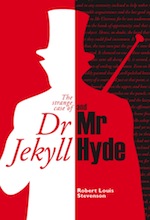 In this classic mix of sci-fi and horror, Dr. Jekyll creates a serum that transforms him into the younger, crueler, and remorseless Hyde, an alter ego that allows Jekyll to express the nastier aspects of his personality and urges without guilt. After taking the potion repeatedly, Jekyll doesn’t need the serum at all to unleash his inner demons, but instead grows dependent on the serum to remain conscious. It’s a fascinating exploration of shame and repression, society and evil, and the danger of substance abuse threads through the tale like a dirty needle.
In this classic mix of sci-fi and horror, Dr. Jekyll creates a serum that transforms him into the younger, crueler, and remorseless Hyde, an alter ego that allows Jekyll to express the nastier aspects of his personality and urges without guilt. After taking the potion repeatedly, Jekyll doesn’t need the serum at all to unleash his inner demons, but instead grows dependent on the serum to remain conscious. It’s a fascinating exploration of shame and repression, society and evil, and the danger of substance abuse threads through the tale like a dirty needle.
A Scanner Darkly by Philip K. Dick
 An undercover narcotics agent posing as a drug user, Bob Arctor becomes addicted to a gnarly psychoactive drug called Substance D, and falls in love with a drug dealer, Donna, whom he hopes will lead him to the high-level sources of the drug. Arctor’s use of Substance D causes, get ready for it … the two hemispheres of his brain to function independently. This means he begins to live parallel lives as both drug user and undercover narcotics agent, so when Arctor’s assigned to spy on his own household, he puts himself under surveillance. And if that’s not enough to put your brain in a paranoid spin, things get even worse when Arctor goes through a punishing withdrawal from the drug. In the afterword, Dick dedicated the book to those of his friends who died or suffered debilitation as a result of their drug use, and he included his own name on the list. Sobering, to say the least.
An undercover narcotics agent posing as a drug user, Bob Arctor becomes addicted to a gnarly psychoactive drug called Substance D, and falls in love with a drug dealer, Donna, whom he hopes will lead him to the high-level sources of the drug. Arctor’s use of Substance D causes, get ready for it … the two hemispheres of his brain to function independently. This means he begins to live parallel lives as both drug user and undercover narcotics agent, so when Arctor’s assigned to spy on his own household, he puts himself under surveillance. And if that’s not enough to put your brain in a paranoid spin, things get even worse when Arctor goes through a punishing withdrawal from the drug. In the afterword, Dick dedicated the book to those of his friends who died or suffered debilitation as a result of their drug use, and he included his own name on the list. Sobering, to say the least.
A Clockwork Orange by Anthony Burgess
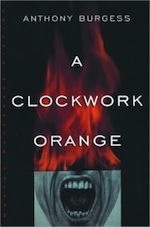 In a near-future dystopian England, gangs dose up on Moloko Plus (or “milk-plus”) before heading out to indulge in acts of random ultra-violence. Served at hangouts like the Korova Milk Bar, and laced with “vellocet,” “synthemesc,” or “drencrom,” this drink “sharpens up” the user for a night of mayhem, making it a fitting cocktail for this novel’s visceral exploration of choice and free will.
In a near-future dystopian England, gangs dose up on Moloko Plus (or “milk-plus”) before heading out to indulge in acts of random ultra-violence. Served at hangouts like the Korova Milk Bar, and laced with “vellocet,” “synthemesc,” or “drencrom,” this drink “sharpens up” the user for a night of mayhem, making it a fitting cocktail for this novel’s visceral exploration of choice and free will.
Sleepless by Charlie Huston
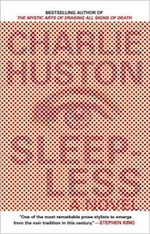 A new disease makes it impossible for the afflicted to fall asleep in this apocalyptic near-future novel. Many of the sleepless have become addicted to computer games, losing themselves in an alternate reality in which insomnia is a virtue. Others seek “dreamer,” a rare drug that works as an antidote to the sickness. In Los Angeles, Parker Haas (whose wife and daughter are slowly dying from the sleepless disease) works undercover to find supplies of “dreamer,” before drug dealers and pharmaceutical companies can corner the market for the drug. The stakes keep escalating in this brilliant piece of speculative fiction filtered through a grimy noir lens.
A new disease makes it impossible for the afflicted to fall asleep in this apocalyptic near-future novel. Many of the sleepless have become addicted to computer games, losing themselves in an alternate reality in which insomnia is a virtue. Others seek “dreamer,” a rare drug that works as an antidote to the sickness. In Los Angeles, Parker Haas (whose wife and daughter are slowly dying from the sleepless disease) works undercover to find supplies of “dreamer,” before drug dealers and pharmaceutical companies can corner the market for the drug. The stakes keep escalating in this brilliant piece of speculative fiction filtered through a grimy noir lens.
Saga written by Brian K. Vaughan and illustrated by Fiona Staples
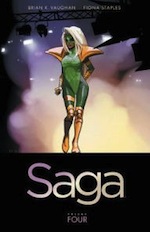 Struggling as an actor on the Open Circuit (an underground acting troupe that broadcasts across the galaxy) Alana tries a drug called Fadeaway, after learning half her co-stars are high on it. Staples beautifully captures the allure of the drug, rendering mind-melting and mind-expanding moments within the same frame. For Alana, it’s a perfect escape from a job she finds at best numbingly dull and at worst horribly humiliating. But when Alana’s husband, Marko, discovers his wife’s drug use, the ensuring argument becomes physical, and the resulting domestic abuse tragically separates the couple. Fadeaway’s role in the story continues, but I’ll not spoil it here. Even if you’re not typically a comic book reader, you should really try Saga. But be warned… it’s addictive.
Struggling as an actor on the Open Circuit (an underground acting troupe that broadcasts across the galaxy) Alana tries a drug called Fadeaway, after learning half her co-stars are high on it. Staples beautifully captures the allure of the drug, rendering mind-melting and mind-expanding moments within the same frame. For Alana, it’s a perfect escape from a job she finds at best numbingly dull and at worst horribly humiliating. But when Alana’s husband, Marko, discovers his wife’s drug use, the ensuring argument becomes physical, and the resulting domestic abuse tragically separates the couple. Fadeaway’s role in the story continues, but I’ll not spoil it here. Even if you’re not typically a comic book reader, you should really try Saga. But be warned… it’s addictive.
This article originally published in May 2016.
 Chris Howard was born and raised in England, and it was there he first began writing stories and songs. He now lives in Denver, Colorado, where he and his wife enjoy mountains, music, and mugs of good coffee. He is the author of Night Speed, as well as the Rootless trilogy.
Chris Howard was born and raised in England, and it was there he first began writing stories and songs. He now lives in Denver, Colorado, where he and his wife enjoy mountains, music, and mugs of good coffee. He is the author of Night Speed, as well as the Rootless trilogy.










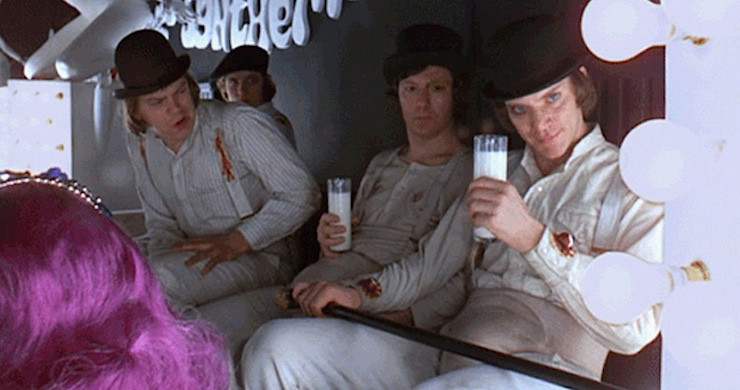
No Dune?
@1 Beat me to it.
Came for soma from Brave New World, was slightly disappointed.
Dude, where’s the Soy Sauce?
I imagine the anti-Euclideans from Peter Watts’ Blindsight are a lot of fun.
Vurt, by Jeff Noon. Vurt is both drug & shared reality.
Narnia and Turkish delight
Bliss and Better Than Life from the Red Dwarf books, the latter for how much more lethal it is than it is in the tv series.
How did you miss Vurt?
No Dune. What.
In some ways I’m glad they didn’t use up slots for the obvious ones (soma, spice) although another one I thought of was stim from the Star Wars books, heh.
Slug and The Final Circle of Paradise by Strugatsky brothers.
Rudy Rucker’s “Ware” books had one called Merge (iirc) turned the users body into a puddle, with the eyes floating on top. Always made me queasy, particularly the Merge sex scenes.
You seemed to have left out the S’s: soma, soy sauce and spice.
In Margaret Atwood’s speculative-fiction MaddAddam trilogy, the inducers of the apocalypse hide a disease in BlyssPluss, a pill that supercharges the libido while preventing conception and STDs. It supposedly wipes out nearly all of humanity, though I can think of many reasons many people might not have taken such pills.
Fantasy, not sci-fi, but Garth Nix’s Keys to the Kingdom series is applicable as usual. One of the immortal humanoid villains can steal and “experience” humans’ memories, and is increasingly addicted to doing so, with language framing it as equivalent to a drug. (It’s the stand-in for Lust in a childrens’ story that attempts to portray the Seven Deadly Sins without invoking anything sexual while ironically inducing my first crush on a fictional woman).
How about Hal Clements “Iceworld”, which has the interesting premise of aliens addicted to a common Earth substance?
An under-remembered classic: Chester Anderson’s The Butterfly Kid, wherein little blue Reality Pills are one of the book’s central gimmicks. (“And I don’t think we’re ever, ever coming down.”)
Drugs? How old school.
Daniel Keys Moran, in his Continuing Time series, showed us a new high: electric ecstasy. You run current directly to the pleasure center of your brain. Highly and instantly addicitive. And it’s just a background piece of the stories published so far. Other authors used variants, but Moran’s version had a street name and dealers.
@18: I do believe Larry Niven beat Mr. Moran to that concept by a couple decades with the tasp and other wirehead devices in Known Space. Definitely a strong contender for ‘drug’, though.
What! No condamine? No stroon? What on Viola Siderea is the world coming to? Mother Hitton’s Littul Kittons?
@19. Ian
When did Larry Niven write his wirehead books and stories? When did Cordwainer Smith write Golden The Ship Was Oh! Oh! Oh! ? This is what I read in that Cordwainer Smith story:
I suspect, Cordwainer Smith was the first …
Somec in Orson Scott Card’s Worthing Saga is an interesting one
@21/Benjacomin: “Tasp” appears in Ringworld (1970) and the similar “droud” appears in Death by Ectasy (1969), so yes Smith’s works from the 1950s push the concept back yet another decade. Seeing as investigations into the use of electricity for medicinal and psychiatric purposes reach back into the early nineteenth century, I strongly suspect that stories involving electricity-as-drug might stretch back nearly as far too. At the very least it seems a natural fit for pulp sci-fi and comics from the 1930s-50s (although I can’t think of any specific examples), especially given the popularity of electrconvulsive therapy during that period.
Thionite, by Klono’s carballoy claws! (Lensmen series by E.E. “Doc” Smith)
This entire article could have been exclusive to Philip K. Dick’s books. Almost all of them had some sort of drug, imaginary or real. He came up through that culture.
@23. Ian
That would make an interesting investigation.
Anyway, I just remembered Stanislaw Lem’s Futurological Congress, though I never went, seeing as I was not invited …!!! Ijon Tichy certainly had a time of it, what with benignimizers, recriminol, the vigilanimides and other such psychotropics. Did anyone here go? Is anyone still there? Or is convinced they are still there? (It’s worse than the House Where the Aspidistra Ran Amok! )
Is there any sci-fi/fantasy work that does not have special elixirs or drugs? ;-)
Chili peppers. Okay, maybe chili peppers as a class are not fictional, but I’ve never met a pepper so hot as to cause hallucinations and possibly spiritual enlightenment, like Johanna Sinisalo’s “Core of the Sun” from the novel of the same name.
I seem to remember that in THE PUPPET MASTERS, Heinlein’s protagonist casually refers to taking various mind-enhancing drugs to enable him to stay awake and perform fast and extensive research, implying to me that such things were a common part of that world at that time.
China Mieville, author of Perdido Street Station, has the best fictional drug ever named “Dreamshit”